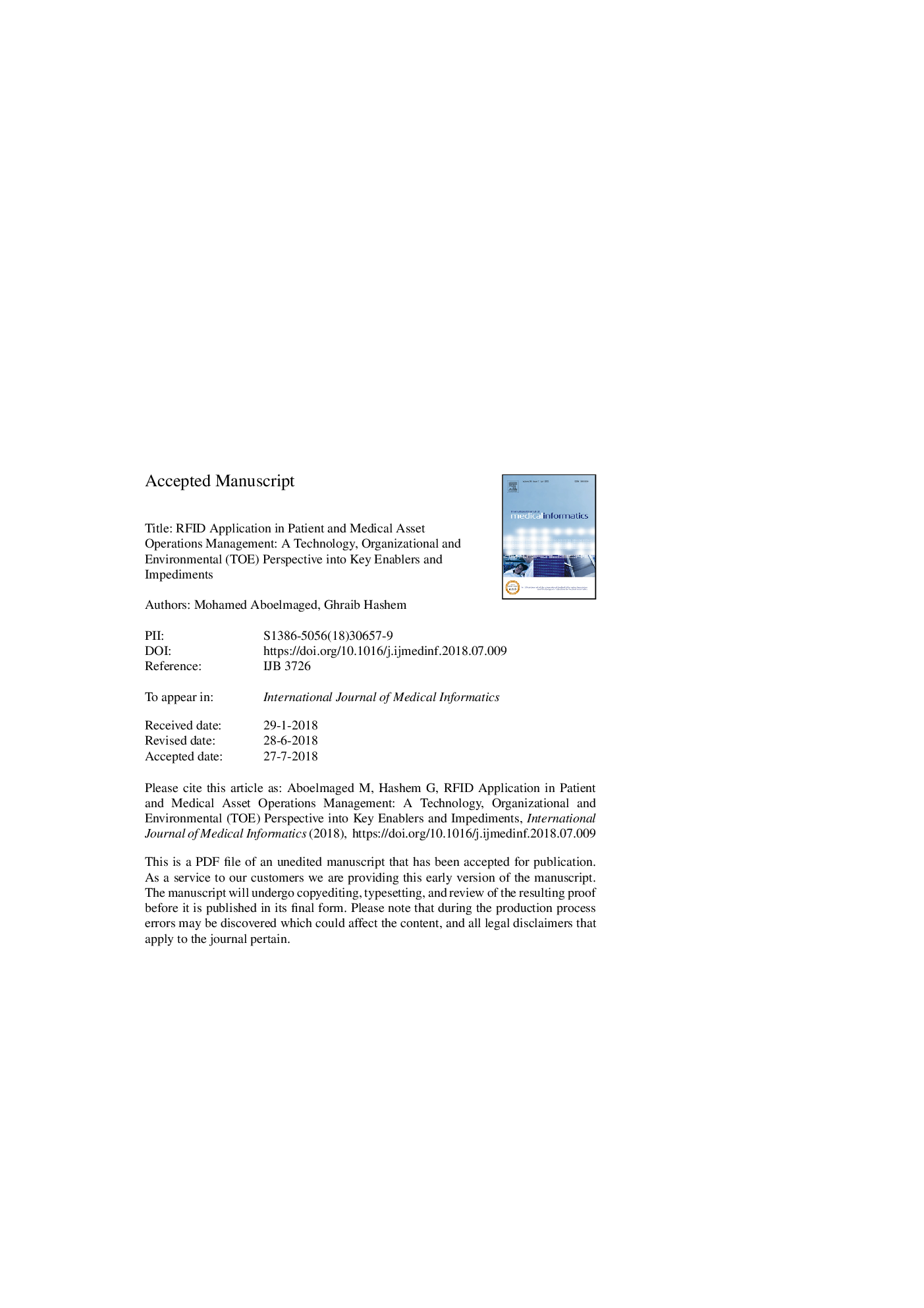| Article ID | Journal | Published Year | Pages | File Type |
|---|---|---|---|---|
| 6926146 | International Journal of Medical Informatics | 2018 | 17 Pages |
Abstract
Hospitals must contemplate the impact of technological, organizational and environmental forces to leverage the benefits of RFID in patient and asset operations management. The results of SEM confirmed the strong effect of the variables on patient management since 57 per cent of its variance is explained by five factors (i.e., technical advantages, organizational capacity, environmental competitiveness, technical complexity and environmental uncertainty). Four factors explain about 48 per cent of the variance in asset management (i.e., technical advantages, organizational capacity, technical complexity and environmental uncertainty). The results provide robust implications for health care managers and RFID vendors to better understand crucial RFID implementation issues, increase its technology fit into service operations, and accelerate its implementation as follows: (1) while organizational resistance does not show significant impact on RFID adoption for managing patient and asset operations, health care professionals should consider that RFID implementation decision is mainly organizational at the firm level rather than an individual choice, as long as RFID benefits are well communicated to the staff. (2) while the effect of environmental competitiveness is only evident in using RFID in managing patient operations, health care professionals should focus on RFID applications that have direct impact on enhancing health service quality, flexibility and delivery considering patients as a base for competitiveness; (3) with regard to the impact of technical advantages, RFID benefits such as enhancing work efficiency and reducing cost should be documented, communicated and nurtured to medical and administrative employees; (4) In response to the impact of organizational capacity, the contribution of RFID applications to medical and managerial knowledge generation and utilization should be tracked and integrated into daily work processes; (5) Vendors should provide appropriate orientations and training sessions targeting RFID complexity involving networks, architectures and operating; and (6) the customization of commercial RFID technology for managing health service operations must be deliberated between all stakeholders in health care context. Forthcoming research is needed to reexamine this model with different variables (e.g., culture) and under further health care conditions or contexts.
Related Topics
Physical Sciences and Engineering
Computer Science
Computer Science Applications
Authors
Mohamed Aboelmaged, Gharib Hashem,
